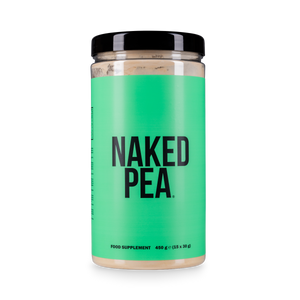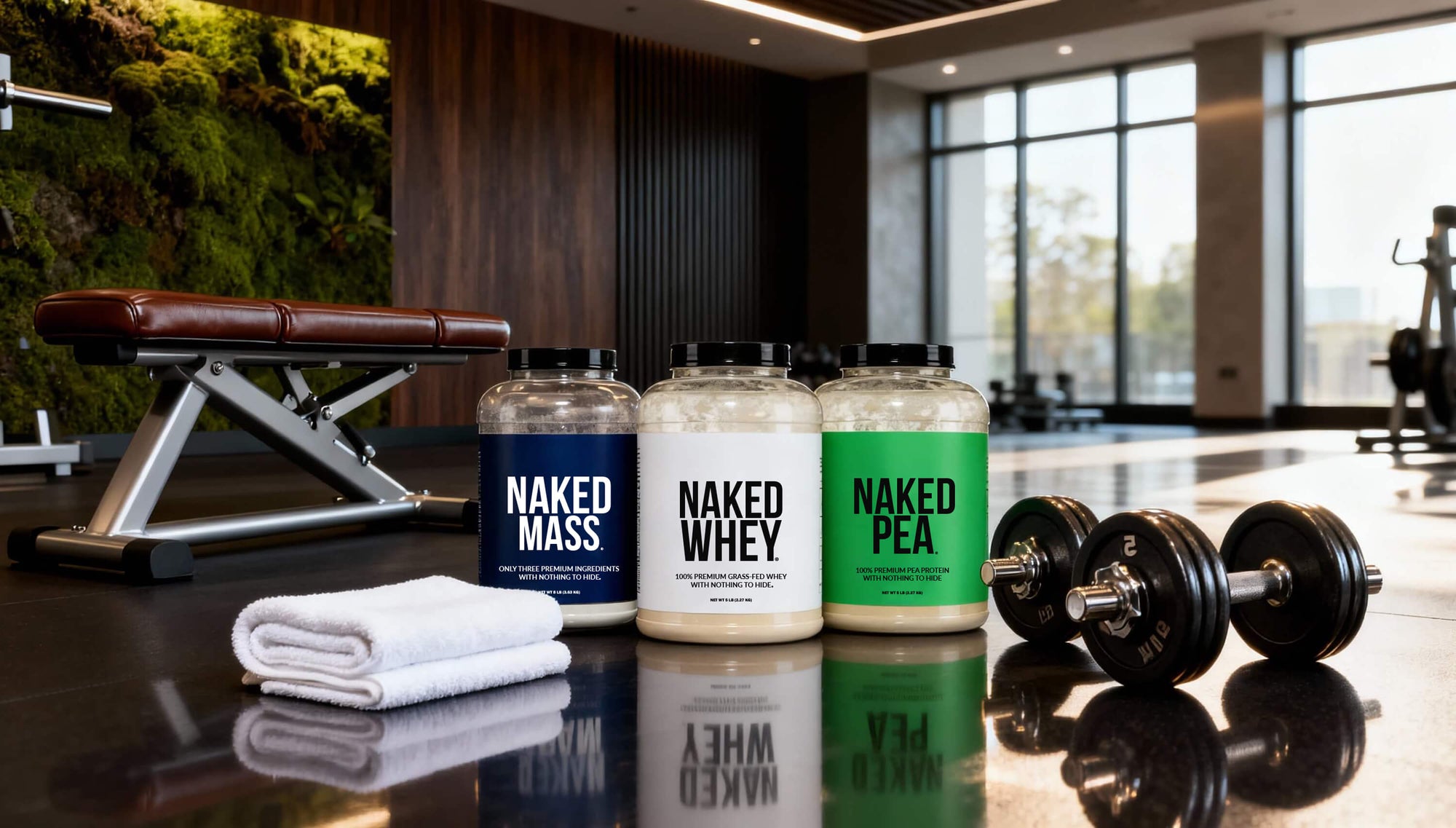Strength and power are often lumped together. But they’re not the same thing – and knowing the difference will make a big impact on your results.
Strength is about how much weight you can move. Power is about how fast you can move it. One’s not necessarily better than the other. But depending on your goals, whether that’s lifting heavier, moving more explosively, or just training smarter, it helps to know which one you’re really chasing.
In this article, we’ll break down what strength and power actually mean, how your body builds each one, and how to adjust your training depending on what you’re aiming for.
Strength vs Power – What’s the Difference?
Strength is your ability to move something heavy. Power is your ability to move something quickly. Both use force (but in different ways).
Imagine a heavy deadlift. You’re using a lot of force, but it’s slow and steady. That’s strength.
Now picture jumping as high as you can or doing an Olympic lift where the bar moves fast and explosively. That’s power.
The key difference is speed. Power adds a time component to strength. How fast you can produce force matters just as much as how much force you produce.

Where Does Hypertrophy Fit In?
Muscle growth, or hypertrophy, is often part of training for strength and power, but it’s not the goal itself.
You can have big muscles without being particularly strong or powerful, because raw size doesn’t always mean your nervous system is firing efficiently or that your muscles are producing force quickly.
Strength and power both depend more on how well your muscles are trained to perform a task than just how big they are.
This is why bodybuilders, who train primarily for size, might not lift as much as powerlifters, and why a smaller athlete might out-jump or out-sprint someone with more muscle mass.
Training style matters; and it shapes your results.
The Physiology Behind Strength and Power

To train effectively, it helps to know what’s happening under the hood.
Strength and power come from more than just muscles. They’re rooted in how your nervous system and muscle fibers work together.
Strength Starts with the Nervous System
When you lift something heavy, your brain sends strong signals to your muscles to contract. The better your body gets at sending those signals, the more muscle fibers it can recruit, especially the big, powerful ones.
This is called motor unit recruitment, and it’s one of the main reasons strength improves (even before muscles get bigger).
Power Requires Speed and Precision
Power adds a speed component. It’s not just about turning on muscles; it’s about doing it fast.
This relies heavily on what's called "rate of force development." Think of this as how quickly your body can go from zero to full throttle. Fast, explosive movements train your nervous system to fire more rapidly and more efficiently.
Fiber Types Matter
Your body has both slow-twitch and fast-twitch muscle fibers.
Slow-twitch fibers are great for endurance. Fast-twitch fibers are built for quick, high-force actions.
Power-focused training targets these fast-twitch fibers more directly, helping you move with speed and explosiveness.
Energy Systems Play a Role

Strength training relies mainly on the phosphagen system – a quick, powerful energy source that fuels efforts lasting just a few seconds.
Power training also taps into this system, but because it involves speed and sometimes repeated efforts (like sprints or jumps), it also stresses coordination, timing, and recovery between bursts.
In short, strength and power are both deeply tied to how your nervous system and muscles communicate. They just speak slightly different dialects.
Training Approaches for Strength vs Power
Once you understand the difference between strength and power, the next step is knowing how to train for each.
While they share some overlap (like using compound lifts and working with intensity) the way you approach sets, reps, and rest changes depending on your focus.
Training for Strength
If your goal is to lift heavier weights, your training should revolve around high loads and lower reps.
Think 3 to 6 sets of 3 to 6 reps at 80–95% of your one-rep max. Take longer rest periods (2 to 5 minutes) to allow your nervous system to recover fully.
Classic lifts like squats, deadlifts, and presses form the backbone of a strength program, with the emphasis on control, tension, and gradually increasing the weight over time.
Remember that you're not trying to move fast. You’re trying to move as much weight as possible, safely and efficiently.
Training for Power

Power training, by contrast, is all about speed. You’re still using force, but the focus shifts to how quickly you can produce it.
That means working with lighter weights (often 30–70% of your max) and moving them explosively.
Typical power training includes jumps, sprints, medicine ball throws, and Olympic lifts like the clean and jerk or snatch.
Keep your sets short (2 to 4 reps commonly) and rest between sets long. You need to be fresh to move fast.
Blending the Two
If you’re a general fitness enthusiast or athlete, you don’t have to pick just one.
A balanced program might include strength work early in the week (heavy squats, deadlifts, presses), and power work later (box jumps, cleans, sled pushes).
Some lifters even pair heavy and explosive movements in the same session; for example, doing a heavy squat followed by a jump or kettlebell swing.
The key is intent. When you train for strength, focus on force. When you train for power, focus on speed.
Nutrition Considerations: Strength vs Power

While the foundational principles of good nutrition (getting enough protein, sufficient calories, and nutrient-dense foods) apply to both strength and power training, there are subtle differences based on your primary goal.
If you're training for strength, your caloric intake may need to be slightly higher to support the heavier loads and greater muscle mass demands, especially during phases focused on building.
In contrast, power-focused athletes may prioritize carbohydrate timing a bit more, since explosive movements rely heavily on glycogen stores and quick energy.
Keeping meals lighter before training can help maintain speed and avoid sluggishness, while post-training recovery carbs help replenish fuel and support nervous system recovery.
In both cases, hydration, micronutrient intake, and sleep remain essential pillars. But tailoring your intake slightly based on your goal can help fine-tune performance and recovery.
Switching Up Your Training Based on Goals
So what should your training focus on? Strength, or power?
Realistically, neither is better than the other. It depends on your own personal goals, and what you want to achieve by going to the gym.
Here are some tips on aligning your training the right way.
When to Focus on Strength
If your main goal is to lift heavier – whether that’s hitting a new personal best in the gym or simply feeling stronger in daily life – then strength training is your best bet.
Strength work builds the foundation: better joint stability, denser muscle, and a nervous system trained to handle heavy loads.
It’s also useful for longevity, especially as we age and natural muscle loss (sarcopenia) becomes a concern.
When to Focus on Power
Power becomes more important when speed and reactivity matter.
Athletes, especially in sports like basketball, tennis, or martial arts, need power to move quickly and efficiently.
But even outside of sports, power has huge value, especially as we get older. The ability to react quickly, like catching yourself during a fall or lifting something suddenly, relies more on power than raw strength.
How to Combine Both
You don’t need to choose one forever. Many smart training programs alternate between strength and power blocks, or blend both within a week.
For example, early in the week you might focus on heavy lifting, while later sessions include more explosive, speed-based movements.
Another strategy is pairing movements: do a heavy set of squats followed by box jumps, or a set of heavy bench presses followed by medicine ball throws. This method, called contrast training, teaches your body to move explosively after being primed with heavy loading.

Final Thoughts
Training with purpose is what turns good results into great ones. Strength and power may look similar in the gym, but they’re driven by different adaptations, and knowing which one you’re aiming for is the key to making real progress.
If your goal is to lift heavier and feel unshakably strong, lean into progressive strength work with heavy loads and controlled reps. If you want to move faster, jump higher, or be more explosive, focus on power, with fast, sharp movements and lighter weights.
You don’t have to live in just one camp. In fact, the best results often come from blending both qualities over time. But the key is clarity. Train for the adaptation you want, and let your workouts reflect that goal.









